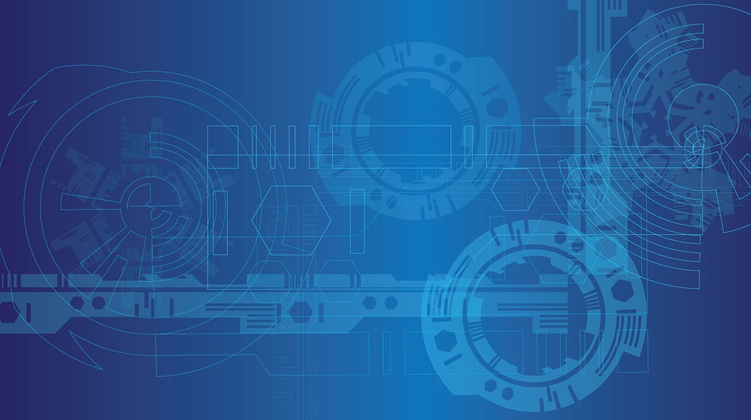Can AI unlock Africa’s youth demographic opportunities?

As the global AI race accelerates, Africa must prioritise youth to benefit from this transformative technology.
Artificial Intelligence (AI) and youth policy are critical to unlocking Africa's demographic potential while leveraging opportunities for employment, skills development and economic transformation. AI refers to computer systems that mimic human behaviour, performing tasks such as decision-making, visual perception and speech recognition, among others. By harnessing AI, Africa has the potential to drive innovation across various key sectors such as agriculture, healthcare, and education, positioning youth at the forefront of sustainable development.
By harnessing AI, Africa has the potential to drive innovation across various key sectors
On the margins of the Summit of the Future, AI and youth took centre stage with the launch of two key documents—AI for Sustainable Youth Development in Africa and Time to Act: Preparing Youth for Work in an AI-Powered World. Both documents highlight AI’s potential for transforming developmental outcomes through youth engagement.
However, despite their contributions to the AI and youth policy debate, both documents demonstrate fundamental challenges in translating policy into action, particularly when it comes to African youth.
According to the African Futures and Innovation (AFI) programme at the Institute for Security Studies (ISS), digitalisation and Fourth Industrial Revolution technologies, like AI, could help Africa leapfrog into transformative, cutting-edge innovations. For instance, mobile banking platforms like M-Pesa have revolutionised access to financial services for millions across the continent. Similarly, AI is being used in healthcare to improve early diagnosis of diseases such as tuberculosis. AI-powered mobile health apps provide remote diagnostics and enable patients in rural areas to access healthcare services that were previously out of reach. This shows how technology can be a powerful driver of inclusion, bridging gaps in access to essential services and fostering greater equality.
Yet, the current policy debates are silent on key issues, including situating responsibility in organising youth agency to seize AI opportunities; the regulatory frameworks needed to support youth-targeted AI investments; the environmental offset connected to AI investment, and how youth can contribute to environmental sustainability while unlocking AI-driven opportunities.
Globally, the AI economy is projected to contribute an estimated US$15.7 trillion by 2030, but Africa risks being left behind compared to regions like North America, Europe and Asia. This disparity is driven by limited AI adoption, underdeveloped infrastructure and insufficient investments—challenges that disproportionately affect African youth. Factors like limited access to reliable electricity, high-cost internet, and skill gaps in education and training further hinder the widespread adoption of AI. Without addressing these barriers, it will be difficult for Africa to fully leverage AI's potential to create jobs, drive innovation, and improve services across sectors.
According to the African Development Bank, Africa has 420 million youth aged 15-35, one-third of whom are unemployed. While there are concerns that AI could increase unemployment by automating jobs and replacing certain human skills, it also holds the potential to create new opportunities. By investing in digital skills training and promoting innovation, Africa can harness AI to complement human labour rather than replace it, unlocking new industries and driving economic growth.
The continent has the world’s youngest and fastest-growing population globally, expected to double to more than 830 million by 2050. Africa will soon have the largest share of Gen Z globally. If properly trained in AI, this generation could transform the continent into a global hub for technological advancement. However, this potential can only be unlocked through strategic investment in research and development (R&D) and a focused ICT-based educational curriculum, starting at the basic levels. This will equip the youth with the skills they need to lead Africa’s AI-driven future.
To ensure African youth are not left behind, policymakers should bridge the gap between policy intentions and implementation platforms. First, responsibilities across government, the private sector—including tech companies—and civil society must be mapped out to clarify roles and identify areas where collaboration and partnerships can maximize impact. Clear leadership is essential for driving AI development and youth engagement efforts. Additionally, research and development are crucial to determining the resources needed to advance youth and AI across the continent.
Despite the opportunities that exist, Africa’s AI landscape is still in its infancy. There are over 2 400 AI companies on the continent, with 41% classified as startups. Yet, 63% of these startups are still in the early stages of development. In 2023, the number of AI ventures securing funding dropped by 35.9% compared to the previous year, reflecting the challenges faced by startups in accessing necessary financial support.
Second, clear regulatory frameworks that support innovation are needed to unlock the AI potential for African youth. These frameworks must provide regulatory clarity that facilitates access to capital for youth-led AI initiatives. For public-private partnerships to succeed, there must be well-defined regulatory ownership and enforcement. If done right, these frameworks can empower youth and position AI as a key driver of economic integration and the success of the African Continental Free Trade Area (AfCFTA).
Lastly, any AI-driven initiative could benefit from having sustainability at its core. AI policymaking and implementation should seek to harmonise technological advancements with economic, social, and environmental sustainability. Policymakers should address concerns about AI’s potential to automate jobs, particularly in low-skill sectors, which could worsen inequality if not managed properly. Young people, especially young women, are particularly vulnerable to job displacement caused by AI-driven automation. For example, a study on Kenya’s banking industry found that women, who are more likely to hold routine task roles, face a higher risk of losing their jobs to AI technologies. Furthermore, fewer women are employed in technology-focused departments like cyber and fraud detection, where AI skills are in high demand, further limiting their access to emerging opportunities in the tech sector. This highlights the need for policies that promote reskilling and upskilling, ensuring that youth—particularly young women—can transition into new roles created by AI and related technologies. Inclusive AI development, especially for marginalised youth, should also be prioritised to prevent deepening inequalities.
At the same time, environmental sustainability should be integrated into AI development. Africa, with its fragile climate systems, is vulnerable to the demands of AI. If developed responsibly, AI could help address climate challenges rather than exacerbate them. The risks extend beyond energy and water use—AI infrastructure can strain land resources. In the Democratic Republic of Congo (DR Congo), which holds over 70% of the world’s cobalt reserves, unregulated mining has caused deforestation, displacement and water pollution. Cobalt, crucial for AI, highlights how unchecked AI growth can impact sustainability. Efficient AI systems are essential to prevent long-term environmental damage. Youth engagement is crucial in designing and implementing green AI projects that align with Africa’s sustainability goals, such as Agenda 2063 and the 2030 Agenda for Sustainable Development.
To fully harness the potential of AI for African youth, a coordinated and strategic approach is key. Acting quickly, policymakers can develop and implement well-defined, youth-centred policies and regulatory frameworks. This is not just about creating jobs; it’s about building an ecosystem that enables young people to lead Africa’s technological future.
Creating an enabling AI ecosystem for African youth could be predicated on establishing clear mandates, developing supportive regulatory frameworks and encouraging local ownership of AI initiatives. Governments, the private sector and civil society must work together to ensure youth have access to capital and material resources, and training, while also safeguarding Africa’s specific needs.
Sthembiso Mkhwanazi, an emerging AI researcher from the Council for Scientific and Industrial Research (CSIR), stated, 'We need a regulatory framework that works for us. Without clear policies that support youth-led startups and access to funding, it’s difficult for young innovators to break through.' This collaborative effort will empower young people to drive AI innovation, align it with Africa's development goals, and leverage its potential to advance initiatives like the AfCFTA.
AI policies for youth should be carefully designed, coordinated and supported by clear pathways for implementation
AI policies for youth should be carefully designed, coordinated and supported by clear pathways for implementation. While transitioning these policies into practice may face challenges, particularly due to tech infrastructure and energy limitations, addressing these barriers through strategic investments would help ensure success. With actionable steps in place, high-level strategies can be effectively translated into meaningful outcomes. Timely and effective governmental action is fundamental for bridging the current AI inequality between Africa and the rest of the world.
By placing African youth at the forefront of AI development and addressing sustainability challenges, the continent can turn its demographic advantage into a driver of global AI leadership. But for Africa’s policies to truly make an impact, they must be actionable, ensuring AI becomes a tool for inclusive growth and opportunity.
Image: AFI/Generated with ChatGPT






